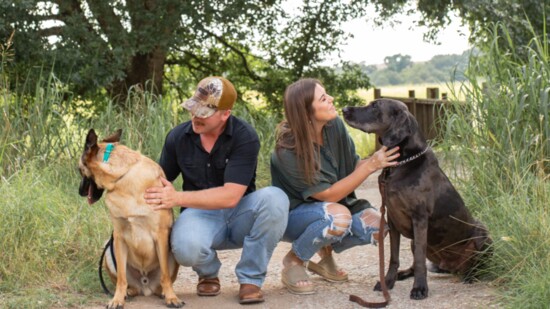1. Jumping On You or Others
Your dog craves attention and affection. Fight the urge to push them or say “no,” and ignore them instead. Stop all verbal, physical, and visual interaction with your pup until all four feet are on the ground. Only then do they get the affection they want, and they learn that pats and scratches only come when they are on all fours.
2. Getting On Furniture
This is a personal preference, but it can cause conflict with two or more dogs in the home. The tension comes because of "resource guarding"—a protectiveness about anything your dog may consider valuable (it can also apply to food, toys, and people). If this happens, correct it with balanced punishment/reward techniques.
3. Pottying Indoors
Dogs will instinctively “go” wherever they’ve learned it's appropriate to. If your pet has learned wrong, try to catch them in the act and carry them outside. Adjust the method of correction as needed until it becomes meaningful to them. Be firm, but fair! Also, don’t use potty pads—this only reinforces going inside the home.
4. Biting or Nipping
It seems innocent when they’re little, but this behavior can last into adulthood if not addressed early. It can be a very serious issue when an adult dog bites. In the event this happens, the punishment must match the crime. Use a muzzle if necessary to prevent true aggression. If bitten, ensure to remain as neutral as possible to prevent the behavior from gaining further value. If your puppy is teething, give them toys to chew on.
5. Barking At People or Cars
This is stimulus-induced behavior, so spend time with your dog throughout the day, especially if there are periods when they bark a lot. Comfort them and encourage calm behavior with treats, attention, and affection. If they do bark, deliver a reasonable correction, and try to disrupt the barking as it’s happening. With practice, your dog will learn to remain calm even in exciting situations.
6. Leash Reactivity on Walks
After indoor reactivity has improved, y’all can take it outside! Whether your dog is reactive to people, dogs, or cars, the principles will be the same. When your pup begins to get excited, give them a task. A “heel” is preferred, but a “sit-stay” works too. Eventually, your dog will anticipate the command and will remain in a calm state of mind.
Mitchell and Raegan Adcock have loved dogs for a long time. Mitchell served as a working dog handler and trainer in the U.S. Marine Corps, and Raegan spent years as a Veterinary Technician. At Xcaliber Dog Training, they believe every dog should be able to enjoy off-leash freedom without their owner having to worry. A well-trained dog is a happy dog, and a happy dog makes a happy owner!
xcaliberk9.com | 863-292-1190 | xcaliberdogtraining@gmail.com
